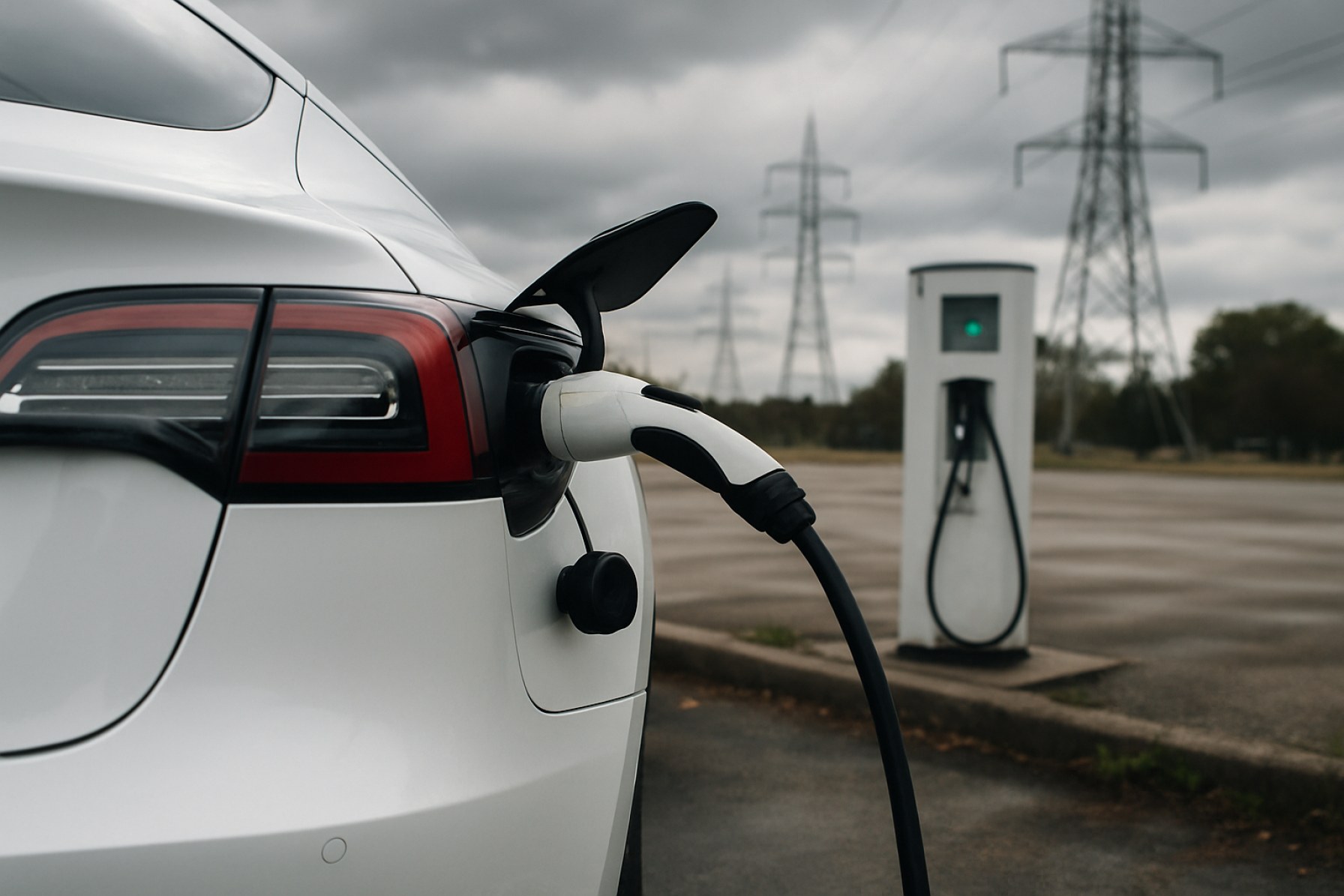- Electric vehicles (EVs) are growing rapidly in the U.S., but public charging station expansion is lagging behind demand.
- There are about 65,000 public charging locations nationwide, vastly outnumbered by the millions of EVs on the road.
- Federal funding and historic investments face delays due to shifting political priorities, permitting issues, and supply chain bottlenecks.
- Charging shortages particularly affect apartment dwellers, renters, and those without home access, potentially widening social inequalities.
- Insufficient infrastructure fuels range anxiety and threatens to impede the transition to clean energy and reduced emissions.
- Success depends on urgent collaboration among automakers, utilities, and governments to expand reliable, fast, and accessible charging networks nationwide.
On city streets and rural highways, electric vehicles (EVs) have become a common sight — gliding past gas stations, their drivers unconcerned with fuel prices. Yet, as America’s appetite for EVs accelerates, a quieter threat edges closer: the nation’s charging infrastructure is struggling to keep pace, threatening the convenience and freedom these advanced vehicles promise.
Charging into Gridlock
Automakers boldly announce deadlines for ending combustion engine production, while states from California to New York pledge aggressive electric adoption goals. Despite these ambitions, the number of public charging stations lags dangerously behind. Recent figures from the U.S. Department of Energy show approximately 65,000 charging locations nationwide—a number dwarfed by over 150,000 already on Chinese roads. With more than 3 million EVs now navigating U.S. roadways, many drivers are discovering that the hunt for a working charger can be more stressful than any traffic jam.
Federal Funding Faces Uncertainty
Momentum for new chargers once seemed unstoppable. The bipartisan infrastructure law promised $7.5 billion to seed a national network. However, shifting political priorities are threatening the rollout, as federal support wavers amid budget disputes. Slow permitting, local red tape, and supply chain bottlenecks combine to slow progress even where funding is available. Under these pressures, the dream of a seamless coast-to-coast EV experience looks increasingly remote.
EV Owners Left Waiting
Drive past some of the busiest charging hubs in Los Angeles or Atlanta and a new ritual has emerged: cars lined up in parking lots, drivers checking their phones, waiting hours for a turn at a working charger. Less populated regions fare worse, with vast charging deserts stretching between towns. For Americans without home chargers—apartment dwellers, renters, urbanites—the challenge is acute, casting a shadow over promises of electrified freedom for all.
The Stakes Go Beyond Convenience
This infrastructure gap isn’t just an inconvenience. If left unchecked, it could chill the nation’s transition to clean energy, stall emissions reductions, and deepen socioeconomic divides. The risk of “range anxiety”—the fear of running out of power far from an outlet—has always haunted the EV movement. Now, underinvestment threatens to turn that anxiety into reality.
Charging the Future
Solutions beckon. Partnerships between automakers, utilities, and private charging networks are ramping up investments. Innovative approaches like fast-charging corridors along highways and plug-and-go stations in urban centers are gaining traction. But for these efforts to take root, political will and public pressure must keep the spotlight on this infrastructure race.
The Road Ahead
America’s shift to electric mobility remains one of the defining stories of our age. Yet the next mile may be decided not in car showrooms or statehouses, but in the overlooked spaces: curbside, parking lots, and rest stops where the future silently plugs in—or sputters out.
Key Point: The electric vehicle revolution holds extraordinary promise, but its progress hinges on a rapidly expanding, reliable charging network. Without urgent investment and cooperation, the specter of empty charging bays may stall the dream of cleaner, greener travel for millions.
Explore more about America’s evolving energy landscape at the Department of Energy.
The EV Revolution’s Hidden Roadblock: Charging Infrastructure Fails to Keep Pace—What You Must Know Before Buying Electric
The popularity of electric vehicles (EVs) in the U.S. is skyrocketing, with millions of Americans drawn to the promise of clean energy and freedom from volatile gas prices. Yet, as the source article identifies, the greatest challenge may not be battery life or sticker price—it’s the lagging public charging infrastructure, threatening to undermine the entire EV movement. But the story doesn’t end there. Let’s dive deeper, offering actionable insights, emerging trends, and key tips for prospective and current EV drivers.
—
Additional Fast Facts & Deeper Insights
1. Types of EV Chargers Matter
– Level 1 (120V): Standard household outlet; 2-5 miles of range per hour, best for overnight home charging.
– Level 2 (240V): Faster, typically found at homes or public spots; 10-60 miles of range per hour (Source: U.S. Department of Energy).
– DC Fast Charging: Delivers 60-100 miles in 20 minutes or less, but is expensive to install and not universally compatible.
2. Compatibility and Charging Networks Vary
– Tesla’s Supercharger network remains the gold standard for reliability and coverage, but until recently was largely proprietary.
– Other major networks (Electrify America, ChargePoint, EVgo) use CCS or CHAdeMO standards—owners must check their vehicle’s compatibility before planning road trips.
3. Regional Disparities Are Growing
– The coasts dominate; California alone has over 30% of all public EV chargers. Vast portions of the Midwest and South have “charging deserts.”
– Apartment dwellers face a double whammy—few home charging options and scarce public stations.
4. Industry Trends and Market Forecasts
– BloombergNEF predicts that by 2030, EVs could make up 40% of new vehicle sales in the U.S. — but only if infrastructure keeps pace.
– Analysts expect EV charging to become a $30+ billion industry by 2027 (MarketWatch).
5. Reviews & Real-World Experiences
– Consumer Reports and J.D. Power’s surveys repeatedly cite inadequate charging as the top dissatisfaction among EV owners—many would not recommend EVs to apartment renters or rural drivers until the landscape improves.
—
How-To Steps & Life Hacks for EV Owners
1. Leverage Apps & Network Memberships:
– Download PlugShare, ChargePoint, and Tesla apps to locate live charger availability.
– Pre-register and join networks in your region—some offer subscription rates for cheaper, faster access.
2. Plan Charging Stops Strategically:
– When road-tripping, pre-map highway fast-charger locations; aim for redundancy in case a station is down.
– Consider hotels or workplaces with charging as part of travel plans.
3. Maximize Home Charging (If Possible):
– Invest in a Level 2 charger if you have a garage or driveway.
– Seek local utility rebates and tax credits to offset installation costs.
—
Controversies, Limitations & Security Issues
– Reliability Problems: According to a UC Berkeley study, 23% of public fast chargers in California were non-functional at the time of testing.
– Equity and Access: Critics flag the risk of a “charging class divide,” as affluent homeowners gain easy access while urban and rural renters are left behind (DOE).
– Payment and Data Security: Charging stations, especially new ones with tap-to-pay, are vulnerable to skimming or hacking if not properly secured.
—
Features, Specs & Pricing – What To Look For
– Look for chargers with at least 50 kW output for fast charging in public settings.
– Universal plugs (CCS) vs. proprietary (Tesla): Note that automakers like Ford and GM are now moving to the Tesla NACS standard from 2025, promising greater cross-compatibility.
– Public charging costs: Range from free (rare), to $0.25-0.69/kWh. Beware demand surcharges at peak hours.
—
Pros & Cons Overview
| Pros | Cons |
|---|---|
| Zero tailpipe emissions | Range anxiety and charging wait times |
| Lower energy costs vs. gas | Charger availability & compatibility gaps |
| Tax incentives | Inequitable access for renters & rural areas |
| Quiet & smooth ride | Potential for higher upfront costs |
—
Pressing Questions Answered
Q: What happens if charging infrastructure doesn’t improve?
A: Widespread driver frustration, slower EV adoption, and a setback in national emissions goals (DOE).
Q: Will new federal/state investments fix the problem soon?
A: Not immediately. Delays from permitting, politics, and supply chains mean improvements are incremental—not overnight.
Q: How can I ensure reliable charging as an EV owner?
A: Combine home charging (if possible) with proactive use of charging apps and network memberships. Support local initiatives for new public chargers.
—
Expert Insights, Predictions & Industry Moves
– The shift to Tesla’s North American Charging Standard (NACS) by Ford, GM, and others could “end the plug war,” making charging easier for all.
– Smart grid integration (vehicle-to-grid or V2G tech) is emerging, allowing EVs to help balance the power grid during peak demand.
—
Quick Tips and Actionable Recommendations
1. If you’re shopping for an EV, map local charging options before buying.
2. Ask your workplace, landlord, or HOA about installing charging infrastructure—groups often secure discounts or grants.
3. Monitor publicly funded infrastructure rollouts via sites like the Department of Energy for updates in your area.
4. Advocate with local officials for more public charging, especially in underserved neighborhoods or town centers.
5. Always travel with a backup charging plan and consider a membership in multiple charging networks.
—
The U.S. EV revolution hangs in the balance not just on automaker innovation, but on the speed and equity of charging infrastructure deployment. Stay informed—and plugged in—to make the most of this revolutionary shift in how America moves.









